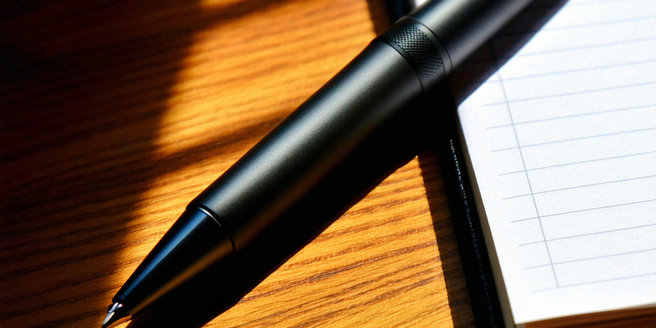Digital Pens: Writing Meets Technology

Introduction to Digital Pens: Bridging Analog and Digital Worlds
Digital pens are revolutionizing the way we interact with both technology and traditional writing methods. Unlike standard pens, digital pens can capture and convert handwriting into digital data, bridging the gap between tangible and electronic documentation. This hybrid tool allows individuals to maintain the tactile satisfaction of writing while seamlessly integrating notes into the digital ecosystem. With advancements in sensors and Bluetooth technology, these pens can connect effortlessly to devices, turning handwritten notes into text. As workplaces and educational environments continuously evolve, digital pens offer a flexible solution that combines the best of both analog and digital worlds, making the transition between paper and screen more intuitive than ever.
Key Features to Look for in Modern Digital Pens
When selecting a digital pen, certain features are essential to ensure optimal usability and performance. Firstly, pressure sensitivity is crucial for capturing the nuances of handwriting, making it ideal for artists or detailed note-takers. Connectivity options, such as Bluetooth or USB, enable seamless integration with computers and tablets. Battery life is another vital factor; longer battery life allows for uninterrupted usage during prolonged writing sessions. Compatibility with various software and devices ensures that users can switch between platforms effortlessly. Ergonomic design enhances comfort during extended use. Lastly, look for pens with ink and stylus functionality to alternate between writing on paper and screens effectively. Together, these features make digital pens versatile tools that cater to diverse user needs.
Top Digital Pen Models and Their Unique Benefits
In the market for digital pens, several models stand out due to their unique benefits. The Livescribe Aegir offers real-time handwriting conversion, excellent for lectures and meetings. The Wacom Bamboo Slate provides a natural writing feel, converting notes to digital files, and syncing seamlessly with cloud storage. For artists, the Apple Pencil delivers exceptional pressure sensitivity and tilt recognition, enhancing creativity when used with compatible iPads. The Neo Smartpen N2 boasts a sleek design and supports multiple languages in its text conversion feature, accommodating international users. Lastly, the Microsoft Surface Pen, with its precise inking capabilities, integrates smoothly with Surface devices, making it ideal for professionals. These models each bring distinct advantages, catering to different preferences and use cases.
How Digital Pens Enhance Productivity and Creativity
Digital pens significantly enhance productivity and creativity by providing a seamless connection between traditional writing and digital processing. For students and professionals, these tools facilitate efficient note-taking and organization by converting handwritten content to digital format. This allows editing, searching, and sharing notes quickly. Artists benefit from the precise inking and pressure sensitivity, exploring creative expressions with digital illustrations. The ease of switching between devices and platforms ensures a flexible workflow, while minimizing clutter typically associated with paper storage. Digital pens support brainstorming sessions, design work, and collaborative efforts by offering direct interaction with digital canvases. Consequently, they foster an environment where ideas can be efficiently documented and developed, driving innovation and efficiency in various endeavors.
The Environmental Impact of Switching to Digital Pens
Adopting digital pens can notably reduce environmental impacts associated with traditional pen and paper usage. By transitioning to a digital medium, the demand for disposable pens and paper production decreases, thereby conserving natural resources and minimizing waste. Reduction in paper usage and ink disposal leads to decreased deforestation, lower water consumption, and reduced carbon footprint. Furthermore, recycled and sustainably-sourced materials in the production of digital pens contribute to greener manufacturing practices. As digital notes can be easily archived, there is less need for physical storage space, reducing clutter and material waste. Consequently, digital pens support sustainable living and contribute to environmental preservation, making them a responsible choice for conscientious users seeking to reduce their ecological footprint.
Future Trends in Digital Pen Technology and Innovations
The future of digital pens is aligned with technological advancements that promise to push the boundaries of traditional writing. Emerging trends focus on integration with artificial intelligence to enhance handwriting recognition and predictions, making digital note-taking more precise and personalized. Advanced sensory technology will enable even greater pressure sensitivity and tilt functionality, catering to artists and designers’ needs. Furthermore, innovations in material science may lead to more sustainable and durable digital pen designs. Connectivity advancements promise more seamless integration with smart devices and cloud services, facilitating the real-time sharing and synchronization of notes. As augmented reality continues to advance, digital pens may offer immersive writing and drawing experiences, revolutionizing how we interact with both physical and digital worlds.